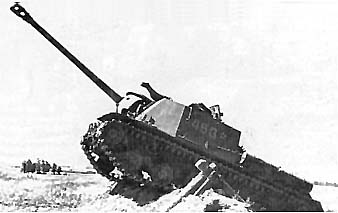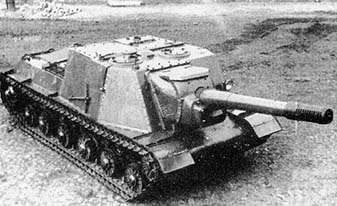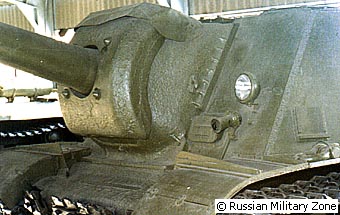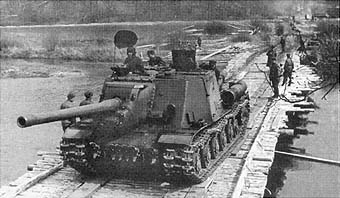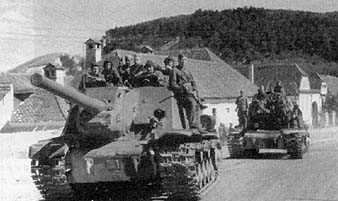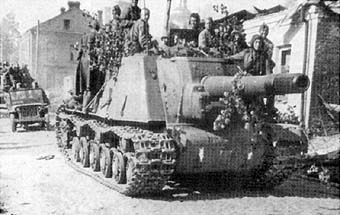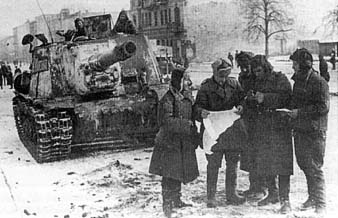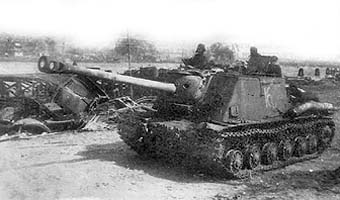| Language |
|---|
| Google Translation |
|---|
|
|
| Main Resources | |||||||||
|---|---|---|---|---|---|---|---|---|---|
|
| Additional Stuff | ||||
|---|---|---|---|---|
|
| Online Services | |||
|---|---|---|---|
|
| Miscellaneous | ||||||
|---|---|---|---|---|---|---|
|
 |
| Log in |
|---|
| Users online |
|---|
| We have 21 guests online |
| Search |
|---|

| JSU-122 and the JSU-152 assault guns |
JSU-122 and the JSU-152 assault guns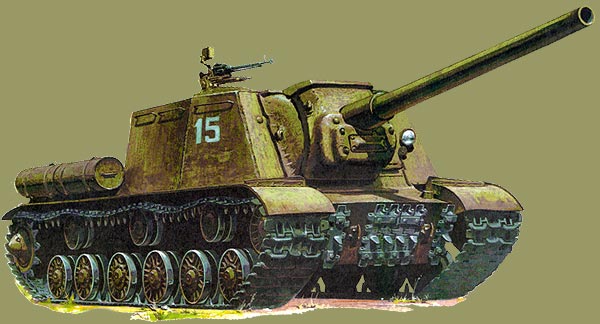 The JSU-122 heavy assault gun The success of the SU-152 forced Soviet tank designers to develop another vehicles based on new JS tank, which production begun in Cheluabinsk. Works on "Object 241" performed at the same time as the works on JS-1 (JS-85) heavy tank. New assault gun looked like its predecessor - SU-152, though the new one had a higher compartment. Internal capacity of both vehicles was equal, so they had an equal amount of ammunition - 20 shots. Both vehicles had the same armament - 152 mm ML-20S gun-howitzer. In summer 1943 the new "object 241" was showed to the GKO and after that it was accepted to the Red Army service under "JSU-152" designation. The main problem during mass production of the new assault gun was lack of ML-20S cannons. Soviet artillery plants weren't able to produce them in proper quantity. Although there were plenty of 122 mm A-19 cannons and huge number of 122 mm ammunition. As a result, in summer 1943 the SKB-2 (design bureau in Chelyabinsk) has been ordered to try to mount an A-19 cannon instead ML-20S.
It was easy because both cannons had the same gun-carriage. At the end 1943, the very first prototype - "Object 242" - has been finished. Then it was tested and accepted for service under the JSU-122 designation. By the end of 1943, the first party of the new JSU-152 and JSU-122 were ready, simultaneously with the first JS-1 heavy tanks. During the war there were several attempts to increase the firepower of the JSU-122. The A-19 cannon was modernised for usage with JS-2 tanks. For this purpose cannon has been equipped with a new semi-automatic block-breech and renamed as D-25S. After modernisation, the practice rate of fire (don't mix with maximum ROF!) increased from 1.5 to 3 shots per minute. Soon, the idea to mount D-25S on the JSU-122 was suggested. The new prototype with the D-25S was named "Object 249". This vehicle had a new gun mantlet, also crew's layout was improved. "Object 249" was accepted for service and renamed as JSU-122S (or JSU-122-2) designation. The JSU-152, JSU-122 and JSU-122S heavy assault guns were based on JS-2's chassis. Most of their mechanisms and devices were unifiewd with the JS-2's ones. Although those assault guns were equipped with different fuel tanks. The hull and the battle compartment are welded of heavy armor plates. Vahicle is divided on four parts: steering compartment; battle compartment; engine; transmission. The crew of JSU-122 and JSU-152 consisted of four or five men: commander, driver, gunner, two loaders (Breech Number 1 and Breech Number 2). If a crew consisted of four men the only one loader was.  Gun mantlets of variouas JSU: the JSU-122S (the left one), the SU-152 and the JSU-122/152
The crew is located in the battle compartment as follow: commander to the front right; drived to the front left; gunner is behind driver; Breech No 1 is behind gunner; Breech No 2 is behind commander. The ammunition of the JSU-152, JSU-122 and JSU-122S consisted of several types of separate loading shots: The crew was armed with either PPS or PPSh sub-machine guns and several grenades F-1 (in the US Army they known as "pineapples"). Standard ammo load of JSU-152 consisted of 20 semi-fixed shells which distributed inside the SPG as follow:  The JSU-130 experimental assault gun. (V.Potapov) Standard ammo load of JSU-122 consisted of 30 semi-fixed shells which distributed inside the SPG as follow: 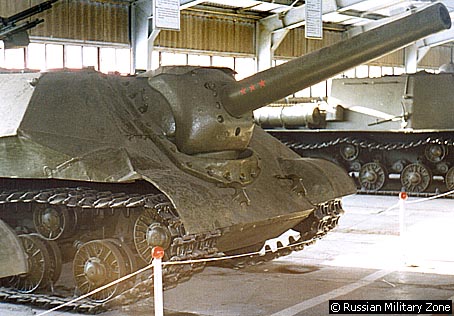 The experimental JSU-152 with the BL-10 gun. (V.Potapov) During war there were some ideas to rearm these assault guns with various artillery systems: the 152 mm long barreled gun BR-8, the 152 mm gun BL-10, and the 130 mm S-26. Prototypes of all these vehicles have been built, but due to different reasons non of them were accepted for service. Two of them are now displayed at Kubinka. There are JSU-152 with the BL-10 and the JSU-130 with the S-26.  The JSU-122S heavy assault gun JSU assault guns in action.
From the spring 1944, the Heavy Self-Propelled Artillery Regiments (the Russian abbreviation is TSAP) of SU-152 being re-equipped with new JSU-152 and JSU-122 assault guns. All those regiments received the "Guards" designation. By the end of the war, totally 56 of such units were formed. Each regiment had 21 JSU-152 or JSU-122 or a kind of mixture of both types. Both assault guns used for the same tasks. Russians didn't distinguished them and used them for same tactic tasks. The Russians strove do not mix them in same units though. In March 1945 the 66th Guard Heavy SP-Artillery Brigade has been formed. It was organized on three regiments: totally 1804 men, 65 JSU-122 and 3 SU-76M. In February 1944, the very first units with JSU's were formed. They were named as the tank units, for example: Independent Heavy Self-Propelled Artillery Regiment (OTSAP - "Otdelniy Tyazheliy Samokhodno-Artilleriskiy Polk"). OTSAP consisted of four batteries (5 vehicles per battery plus one vehicle for regiment's commander). The tactic employment was the same as for common Heavy Tank Regiments: support the offensive operations. All OTSAPs were in Army's and Front's subordinate (mostly in reserves). Those assault guns used mainly for the long range gunfire because they weren't effective at short ranges. The slow ROF did them ineffective in close combat. The JSU-122 become the most effective long-range tank destroyer, while the JSU-152 had the average armor penetration. That was because of absent of AP ammunition and slower muzzle velocity. That's why many western sources consider the JSU-122 as a "tank destroyer" and JSU-152 as an "assault gun". In fact, both guns were heavy assault guns, cause they used in this manner (as I said above, the Russians used them for the same purposes). ML-20S was able to penetrate the 120 mm vertical armor from the 1000 metres, A-19 - 150 mm armor from the same distance. In spite of absent of machine-gun(s), all three types of these assault guns were very effective weapon for a street fighting because of powerful guns with a great HE effect. The first large-scale usage of the new assault guns was in summer 1944, during the Soviet offensive operation "Bagration", where at least 14 OTSAPs were involved. Soon, these guns acquired the honor of very effective weapon against German "Tigers" and "Panthers". For example, in summer 1944, the half of the 502th PzAbt (6 vehicles of 12 total) was destroyed by JSU's gunfire. Often those Heavy Self-Propelled Artillery Regiments used together with tanks or infantry and supported their attacks. Usually those JSU's become the main defensive weapon during sudden German counter-attacks. For example, on January 15, 1945, in East Prussia near the Borove town, Germans launched a counter-attack against Soviet infantry that was supported by 390th Guards OTSAP. Soviet infantry retreated behind the regiment's positions. The regiment opened a direct fire, many of the German AFVs were destroyed and most of German soldiers were killed. The counter-attack failed. Time to time, JSU's used for artillery missions because they were able for both direct and indirect fire. In particular, during the Sandomir-Silesia offensive operation, the 368th Guards OTSAP of the 1st Ukrainian Front was assigned for artillery mission and for 107 minutes the regiment fired 980 shells. As a result, two German mortar batteries were destroyed as well as other 8 German guns, about one German infantry battalion was wiped out. Interesting to note, that additional rounds were placed at the vehicles, but anyway, JSU's used their "internal" ammunition first. Otherwise, rate of fire become slower because it takes up to 40 minutes to load 20 rounds into the vehicle. 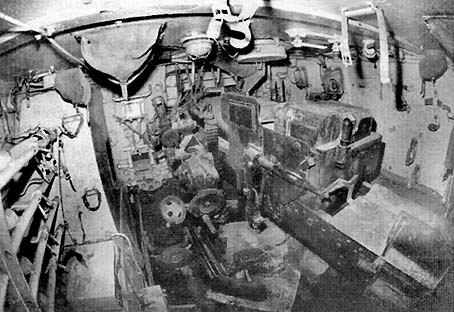 The interior of the JSU-152 assault gun. 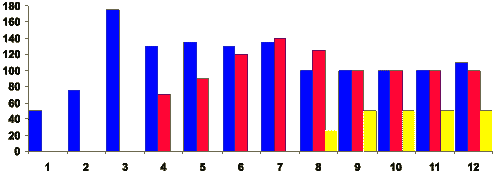 Manufacture of "JSU" assault guns in 1944: Blue: the JSU-152; Red: the JSU-122; Yellow: the JSU-122S 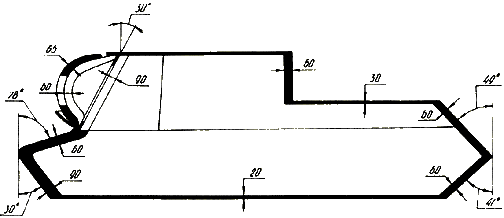 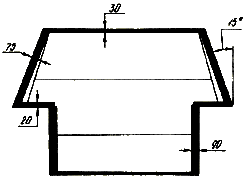
J! Reactions Commenting Software General Site License Copyright © 2006 S. A. DeCaro |
|||||||||||
|
© The Russian Battlefield, 1998 Webdesign: |






